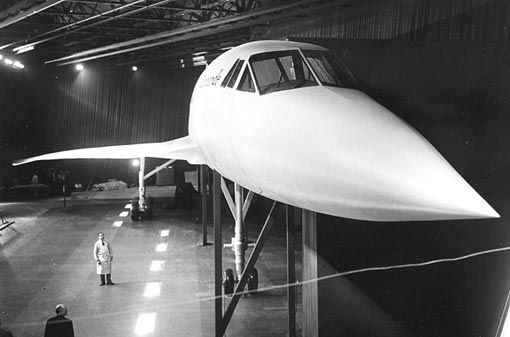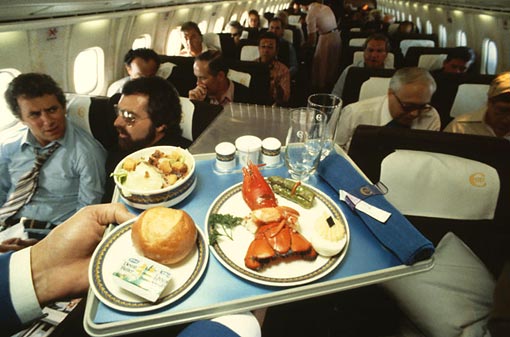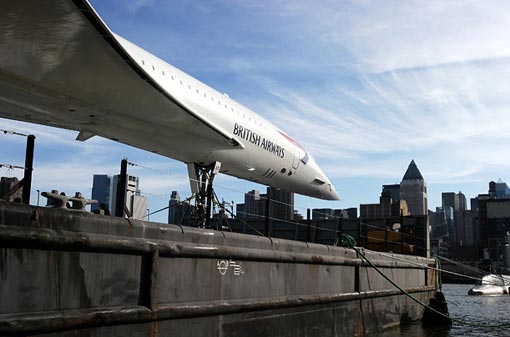You are hereBlogs / WcP.Scientific.Mind's blog / On Mar 2, 1969 world's first supersonic jetliner Concorde took flight, feat of collaboration eng. & work of beauty
On Mar 2, 1969 world's first supersonic jetliner Concorde took flight, feat of collaboration eng. & work of beauty

(quote)
It was a feat of engineering and a work of exceptional beauty and grace. It won the hearts and minds of millions of people.
Forty years ago today the supersonic Concorde took its first test flight, and a design paragon flashed across the skies over Toulouse. With its droop nose and delta wing, the Concorde was a high point of 20th century engineering (its maiden flight came three months before the first moon landing) and the kind of cooperative effort that now seems beyond us. As we enter a period of infrastructure spending, it’s worth noting what kept the Concorde aloft for 27 years.

"One reason for its longevity is that the Concorde's design is so idiosyncratic--and so tightly defined by function--that it is impossible to date, and would seem just as inspiring and surprising if it were unveiled today,” Alice Rawsthorn wrote last month in the International Herald Tribune.
For nearly three decades, the Concord delivered rock stars, models and other members of the limousine fraternity across the Atlantic for a round-trip price of $13,500. It was clubby: Madonna flew it. So did Tyler Brûlé, and Heidi Klum. It was not unusual for passengers to visit the cockpit with glasses of champagne. Flying at an average speed of Mach 2.02 (1,330 mph), it cut the flight time from Europe to New York and Washington by more than half (its record time: 2 hours, 52 minutes).

For a certain kind of passenger it marked the high tide of high-tech travel luxury. For the rest of us, it was the first in a series of technologies that would shrink the world: for the first time it was possible to breakfast on croissants in the 16th arrondissement and catch lunch on Madison Avenue the same day (thanks in part to the time difference).
How could something concurrent with Creedence Clearwater Revival look so timelessly cool today? The delta wing, in the shape of a triangle, was developed in Germany before WWII, but it could pass for a 2009 design. It was much stronger than a conventional swept wing and made room for fuel and other storage. Most importantly, it stayed behind the supersonic shock wave precipitated by the long narrow aircraft nose, which hydraulically lowered itself, or "drooped," so that pilots could have an unobstructed view for landing and takeoff.

The Concorde’s fuselage flexed more than conventional jets, and as a result the pilots could see the floor bend as they looked back through the length of cabin. The cruising altitude of 60,000 feet exposed passengers to almost twice as much solar radiation as a normal flight, and for this reason the pilots had a radiometer. If they detected unusually high readings they descended below 47,000 feet.

The Concorde was the product of elaborate government cooperation. Aérospatiale and British Aircraft Corporation needed heavy underwriting from their respective governments to build the fleet of 20. The project was the subject of a special treaty between the two countries, which didn’t stop them from quarreling over every detail--right down to the Gallic 'e' on the end of its name. Their collaboration was spurred by Cold War anxiety. A Soviet competitor, nicknamed the "Concorski" for its suspicious resemblance to the Concorde, may or may not have resulted from Soviet espionage. Boeing developed a supersonic jet with titanium wings and a cruising speed of 1,800 mph, but the U.S. government chose not to subsidize it, and the project died.

On July 25th 2000, a Concorde crashed in suburban Paris, killing 113 people. The crash, combined with 9/11 and the travel slump that followed, spelled the end. The Concorde made its last flight in 2003 with a passenger list that included Joan Collins, Christie Brinkley and David Frost.
"Never has such a beautiful object been designed and built by man," Air France's chairman, Jean-Cyril Spinetta, said at the time of its grounding. "…It continues to live on in the human imagination."

(unquote)
Photos courtesy of Central Press / Getty, Keystone / Getty, AP, Jim Sugar / Corbis, AFP, Reuters / Corbis, Richard Cohen / Corbis
Original Source: Time and Fast Company


















